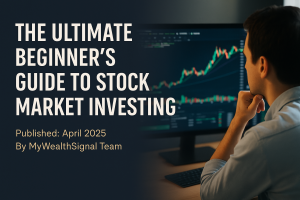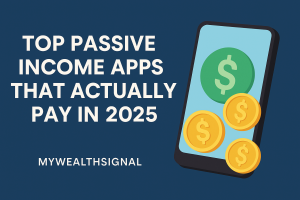Defining Your “FIRE Number”: The journey begins with knowing your destination. In financial independence terms, that means calculating how much money you need to have invested to safely live off the returns for the rest of your life. Many in the FIRE community use a simple rule of thumb called the 4% rule. This guideline suggests that if you withdraw 4% of your investments annually (adjusted for inflation), your money should last at least 30 years, if not indefinitely – because historically, a well-balanced portfolio could on average grow more than 4% per year, outpacing withdrawals. Using the 4% rule, you can estimate your “FIRE number”: it’s roughly 25 times your annual expenses. For example, if you need $40,000 per year to live, you’d want about $1,000,000 invested (since 4% of $1,000,000 is $40,000). This is a rough estimate, of course. Some people use 3.5% or 3% for extra safety, especially if they want to retire very young and make the money last 50+ years. The key point is: define how much annual income you desire in retirement, and calculate the nest egg needed to generate that. This target gives you a concrete goal to work toward. It can be motivating to know your number – suddenly “financial independence” isn’t a vague idea, but something like “I need $750,000 invested to be free.” That said, remember to factor in personal variables: Do you expect your expenses to change in retirement? (Maybe you’ll spend less on commuting, but more on travel.) Will you have other income sources like rental properties or part-time work? Refine your number accordingly. And yes, a million or more dollars sounds daunting, but don’t be discouraged – you’ll reach it step by step, which we’ll discuss next.
Aggressive Saving – Frugality with Purpose: Once you know your target, the next phase is saving a very high percentage of your income to reach that big number. FIRE aspirants commonly save 50% or more of their income (some even 70%+) during their working years. The average person might save 10-15%, so hitting 50% requires a different mindset and lifestyle choices. The core idea is living well below your means so you can invest the difference. This often means rethinking the big expenses: housing, transportation, and food. For example, you might choose a more modest home (or location) than you can afford, if it lets you save an extra $1,000 a month on rent or mortgage. You might drive an older, paid-off car rather than taking out loans for a new one. Perhaps you cook at home most of the time instead of eating out. These are sacrifices in the eyes of some, but many in the FIRE community frame it differently – it’s about valuing freedom over luxury. Every dollar you don’t spend now is a dollar (actually more, once invested) that brings you closer to independence. One helpful practice is creating a tight budget and tracking every expense (our upcoming Budgeting and Saving for Beginners guide will offer a step-by-step plan for this). Identify areas where spending doesn’t align with your core happiness and cut ruthlessly there. Importantly, FIRE doesn’t mean you never have fun – it just means you budget for fun in a conscious way. Maybe you forgo expensive bar nights but keep a cheaper hobby you love. Or you travel hack to still take vacations on the cheap. Adopting a frugal lifestyle can actually be empowering when you see how quickly your savings grow. Each month, as you put, say, 50% of your paycheck into investments, you can tangibly measure progress toward your freedom. Some in the movement gamify it, celebrating each time their investment gains or dividends cover a new bill (for instance, “my portfolio can now pay my electricity bill forever!”). By staying focused and mindful about spending, you’ll find that high saving rate is achievable and maybe even enjoyable, because it’s fueling your future freedom.
Boosting Your Income (and Investing the Extra): Saving more from your current income is one side of the coin – the other side is increasing your income so you have more to save. The faster you can grow your earnings (and funnel those earnings into investments), the faster you reach FI. There are a few ways to approach this. One is advancing in your career: acquiring new skills, aiming for promotions or raises, or even switching jobs/industries to one that pays better. If early retirement is your goal, you might treat your career moves very strategically, even if it means a more intense job for a decade to reap higher pay. Another approach is building side hustles or passive income streams alongside your main job. Many people on the FIRE journey start small businesses, do freelance work, or create sources of passive income (like rental properties or dividend stock portfolios). The extra income from a side hustle can go straight into your “freedom fund.” Because MyWealthSignal often talks about online income, you already have resources – for example, implementing ideas from 5 Side Hustles You Can Start Today could kickstart additional income that accelerates your plan. A concrete example: say you can earn an extra $500 a month from a side gig and you invest that at a 7% return – in 10 years, that side gig alone could add roughly $83,000 to your nest egg. Over 15 or 20 years, the numbers are even bigger thanks to compound growth. Speaking of which: investing all these savings is absolutely critical. Simply hoarding cash under a mattress won’t get you to early retirement – you have to make the money work for you. Let’s explore that next.
Investing for Growth: Achieving financial independence on a timeline of, say, 10-20 years (instead of the traditional 40+ year career) means you need your savings to grow, and grow substantially. This is where investing wisely comes in. The stock market is a common vehicle for FIRE seekers because, historically, it has provided solid long-term returns. A popular strategy is investing heavily in index funds or ETFs (funds that track the entire market, like the S&P 500 index). Index funds offer broad diversification, low fees, and competitive returns without the need to pick individual stocks – a great fit for those focusing on long-term growth. For instance, an S&P 500 index fund has returned around 7-10% annually over many decades. At 8% annual return, money doubles roughly every 9 years (rule of 72). That can dramatically boost your savings. Many in the FIRE community invest 70-100% in stocks during their accumulation phase to maximize growth (with the plan to shift to a more balanced portfolio near retirement). Depending on your risk tolerance, you might also include some bonds or real estate for diversification. Real estate is another path to consider: owning rental properties can produce ongoing income and appreciation – though it requires active management, it can accelerate FI if done well. Some FIRE folks split between index funds and rental properties to have multiple engines. Another, more recent avenue is investing in dividend growth stocks (companies that regularly increase their dividends); over time, the dividend income can become a sizable passive cash flow. Whatever investment mix you choose, the key is consistency and a long-term mindset. Automate your investing if possible – for example, have a set amount or percentage of your paycheck go into your brokerage and retirement accounts every month, before you even see it. Make investing as routine as paying a bill. It helps to continuously educate yourself about investing (if you’re new, see our Ultimate Beginner’s Guide to Stock Market Investing for a solid foundation). As your knowledge grows, you’ll feel more confident in your strategy. One caution: avoid overly speculative “get rich quick” investments, because a big loss can set back your timeline significantly. FIRE is about reaching a goal reliably, not gambling on one lucky stock pick. So stick mostly to proven vehicles and let time and compounding do the heavy lifting.
Adjusting Mindset and Lifestyle for the Long Haul: The road to early retirement is a marathon, not a sprint. It’s important to mentally prepare and maintain motivation through the years it may take to reach FI. One helpful mindset is to view saving and investing as a positive challenge or game, rather than deprivation. You’re not just cutting expenses – you’re buying your freedom. Every dollar saved is a little more life energy you get to reclaim for yourself. Some people on this journey use visual trackers (like a thermometer chart that fills up as net worth grows) or participate in online FIRE communities for support and inspiration. It’s also crucial to have your family or partner on board if you have one. Saving 50%+ and making unconventional choices (like skipping luxury purchases that peers indulge in) can be hard if your significant other isn’t aligned with the goal. Have open conversations about why financial independence matters to you both and the specific life you want after achieving it. Paint a picture of the benefits: “We could both quit our stressful jobs and travel, or start that business we actually love, etc.” When everyone is working as a team, the sacrifices feel more purposeful. Along the way, remember to occasionally enjoy the journey. There’s a balance to strike between extreme frugality and living a fulfilling life. Burnout can happen if you deny yourself every pleasure for years. Many FIRE adherents budget for small indulgences or free/low-cost fun (like hiking, library books, potluck dinners with friends) to keep their quality of life good even while saving hard. The lifestyle you craft en route to FIRE should be sustainable; after all, some aspects of it (like mindful spending habits) will likely carry over into your FI life. In fact, reaching FI often involves a permanent mindset shift – you learn that happiness doesn’t come from spending money lavishly, and that contentment and creativity can increase when living with intentional limits.
Reaching the Finish Line – and Then What? Let’s say you stick to a high savings rate, manage to significantly increase your income over the years, and consistently invest. Eventually, you might find yourself looking at your accounts and seeing that magic number – your FIRE target – being met or within reach. It’s a surreal and exciting feeling. But early retirement isn’t as simple as “one day you stop working and everything’s perfect.” It’s a major life transition that requires its own plan. As you approach financial independence, you’ll want to think about how you’ll withdraw money and how you’ll spend your days. On the financial side, many opt for something like the 4% withdrawal strategy we discussed, but some choose a more conservative 3-3.5% initial withdrawal to add extra cushion (especially if retiring extremely early). It’s wise to maintain some flexibility; for example, you might plan to live on $40k a year but have the ability to trim to $35k in a market downturn to let your investments recover. In addition, consider maintaining a cash buffer or bond allocation to cover a couple of years of expenses – that way you’re not forced to sell stocks during a slump. On the life side, plan for a meaningful way to use your newfound freedom. Many early retirees don’t actually “do nothing” – they often pursue passion projects, part-time work, or even second careers in a field they truly love (just without the pressure of needing the income). Some travel extensively; others volunteer or create art. The point is to have a sense of purpose and community in early retirement, since you won’t have the built-in structure of a job. This is an exciting problem to have – you get to design your ideal life. It could be helpful to test the waters: take a sabbatical or long vacation when you’re close to FI to see how you handle large amounts of free time and whether your expense estimates hold true. Financial independence also doesn’t have to mean you stop earning money entirely. Many FIRE achievers still earn some income doing things they enjoy (like freelance consulting, running a small business, blogging about finance, etc.), which can supplement withdrawals and add personal fulfillment. This concept is sometimes called “Barista FIRE” (covering part of expenses with a fun low-stress job) or “Coast FIRE” (working in a reduced capacity because investments will eventually cover retirement). Early retirement is a flexible concept – you make it your own.
Conclusion: The road to financial independence is challenging, but it’s one of the most rewarding journeys you can undertake. By spending less, earning more, and investing wisely, you systematically build a future where money no longer dictates how you spend your time. Whether your goal is to retire at 45, or simply to have the option to work on your own terms, the principles of FIRE will get you there. It requires discipline – saying no to some of today’s wants for a much bigger reward tomorrow – but along the way you’ll likely discover that freedom was what you wanted all along, not the fancy car or luxury gadget. You’ll also find a community of like-minded people (online forums, blogs, maybe local meetup groups) who can offer tips and moral support. Financial independence isn’t just for the ultra-rich; it’s achievable for many average earners through consistency and smart choices. As you implement your plan, track your progress and celebrate milestones: the first $100k saved, the first time your investments earn more in a month than you do at work, the point when your net worth equals a year’s expenses, and so on. These wins keep you motivated. And remember, even if you decide not to fully retire early, you’re creating tremendous financial security for yourself. That alone reduces stress and opens up options – perhaps allowing you to take a lower-paying job you love, or to handle emergencies without panic. Every step toward FI gives you more control over your life. So start today: outline your plan, calculate your FIRE number, trim some expenses, and find that side hustle or career move to boost your savings. The road may be long, but with each passing month of smart decisions, you’re building a bridge to a future where your time truly belongs to you. Financial independence, and possibly early retirement, can be more than a dream – it can be your reality, one day at a time.







